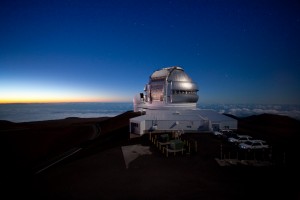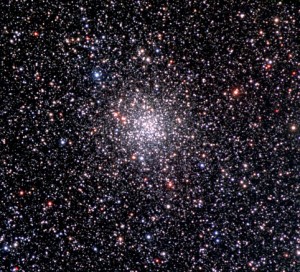Have you ever looked out into the night sky and wondered what exists beyond Earth? Astronomers commit their research towards solving the unsolved mysteries of the universe by using their scientific knowledge to interpret images captured by space-related technology. Astronomical technology has changed dramatically within the last few decades, and these advancements allow for better data collection. By using telescopes, such as the Hubble Space Telescope, and the Gemini North Telescope, or photographic plates, astronomers are able to view stars and their orientations in space.
When stars are grouped together in clusters with specific elemental compositions they are called globular clusters. Kyle Cudworth, an astronomer at the University of Chicago, and his team studied the globular cluster M71 to look at the proper motion of approximately 350 stars in M71. Proper motion is the change in angle relative to the viewer a star makes over an observed period of time. Cudworth’s team used photographic plates, which are sheets of glass that show the positions of different stars. By using multiple photographic plates of M71 over a large period of time, Cudworth’s team was able to view the difference in position of the stars and trace their motions relative to themselves. They had plates with data from 1901 to 1980. This nearly 80-year time frame gave Cudworth the ability to clearly detect the motion of the stars studied within M71. Cudworth was able to determine the speed of a large number of M71’s stars. He also approximated a speed for M71; it is a relatively slow speed for a globular cluster.
What is the possible explanation for M71’s slow space velocity? Researchers have suggested that some globular clusters may possibly contain intermediate-mass black holes (IMBHs) in their centers. IMBHs are located in the middle of hundreds of thousands of stars that are densely packed together by its gravitational pull. If IMBHs exist, it would further explain the different sizes of black holes; it is known that small stellar mass black holes exist and there are extremely large supermassive black holes. This sparked a team of UBC astronomers, including Raminder Samra, to further investigate M71 for the presence of an IMBH.

Podcast YouTube by Fromage79 (Group 2 Science 300)
After collecting his data, Samra discovered that his value for the space velocity of M71 was very close to Cudworth’s value. This is interesting as a significant difference between Cudworth’s research and Samra’s research is the technology used. Cudworth greatly relied on photographic plates while Samra’s team used adaptive optic technology.

Video from Youtube, Rachel Chang (Group 2 Science 300)
With the use of different technology and data, astronomers were able to discover important information on the globular cluster M71. Cudworth was able to record the proper motion of hundreds of stars within M71, while Samra was able to the same and also conclude that it is unlikely for M71 to have an IMBH in its center. This further proves that the universe is a complex environment with many misconceptions about what we observe.
By Ryan, Karly, Rachel and Dominic. Science 300 Section 109, Group 2



